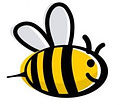Springtime is the time to start encouraging some kindergartners to read words as a whole instead of sound-by-sound. Earlier in the school year, we are thrilled when our students start learning and saying sounds and then even more so when they begin to blend the sounds together and figure out words.
But by springtime, we definitely have some students who are capable of reading CVC words as whole words, without having to say each sound individually and then blend the sounds together.
The questions are:
Are students aware there is this other way of reading words?
Do they know that this other way of reading is a real possibility for kindergartners, themself included?
Have you given them permission to give it a try? We’ve been telling them for months how to say the sounds first and then go back and blend them all together.
Do they know how to give it a try?
Do they understand that there are some words that they’ll be able to read fast (without saying the sounds) and other words for which they’ll still need to say the sounds?
Are they comfortable taking a risk on the words that they think they might be able to read as a whole?
You can touch upon all of these points as you assess and encourage whole word reading. Watch the video above for teaching points.
Learning to whole word read is important because we don’t want young readers to be stuck in the sounding-out phase for too long. If left to mire there, their reading fluency will be negatively affected as well as their comprehension. It is worth the time and effort to nudge students into whole word reading and important to not get too concerned about the inaccuracies and anxiety that might temporarily increase during the transition to whole word reading.
Teaching students to read words as a whole is the ultimate goal.





Assessing and Encouraging Whole Word Reading